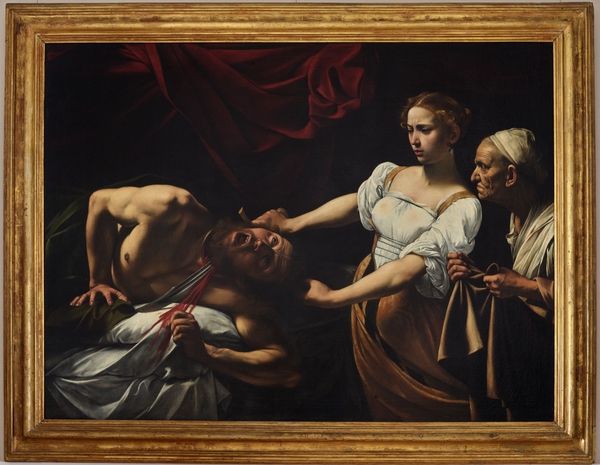For at least 20 years, Nicholas Poussin's Death of Germanicus (1627), a prized painting in the collection of the Minneapolis Institute of Art (Mia), has been on the "do not loan" list. But when the Palazzo Barberini in Rome asked to borrow it for an exhibition celebrating the legacy of Pope Urban VIII on the 400th anniversary of his election, the Minneapolis museum relented. It was an important show, and the Poussin had been commissioned by a nephew of Urban VIII, who was born Maffeo Barberini. The painting remained in the family until 1958.
 Caravaggio's Judith and Holofernes |
In return, the Minneapolis museum also got a gem. The Barberini is lending Caravaggio's
Judith and Holofernes (1599)—an equally important painting that depicts the biblical heroine Judith, who beheaded the Assyrian general Holofernes and saved the Hebrews from subjugation. Considered a breakthrough, the Caravaggio will go on view on 20 April as the heart of an exhibition featuring 14 additional paintings, sculptures, drawings and prints, dating from about 1480 to 1999, on the Judith narrative, many reflecting Caravaggio's influence.
Rachel McGarry, the Minneapolis museum's chair of European art and curator of Caravaggio's Judith and Holofernes (20 April-20 August), called the painting "radically revolutionary" and an obvious springboard for a show.
 Corinth's version |
The Judith theme dates to the Middle Ages, according to Steven Ostrow, an art history professor at the University of Minnesota. Caravaggio's image, however, is distinct, he says. In contrast to most previous versions, Caravaggio portrays Judith in the act of beheading Holofernes, with the blade slicing though his neck and blood spurting from the wound—not before or after the decapitation. "It's a painting of high drama and violence, a huge leap from his early pictures, which were more static," Ostrow says. In it, Caravaggio both captured Judith's psychological state and sexualised her. The painting, which was Caravaggio's first real history painting, increased the popularity of the Judith theme among artists.
Drawing solely on Mia's permanent collection, McGarry chose a colour lithograph (1910) by Lovis Corinth (1858-1925) that shows Judith raising her sword; a terracotta sculpture (1750) by Ignazio Collino (1706-1787) of Judith holding Holofernes's head at her side; and a Giovan Gioseffo dal Sole (1654-1719) painting (around 1695) of a determined Judith, among others.
The most recent work in the Minneapolis exhibition, by Tina Blondell, I'll Make You Shorter by a Head (1999), shows a frontal, bare-breasted, sexy Judith holding Holofernes's head. "The title suggests her view through a female lens, giving the woman agency," McGarry says.
 Blondell's version |
The collaboration between Mia and the Barberini may extend beyond these loans. Members of the Barberini family were remarkable arts patrons, and the Mia owns six paintings, a sculpture and a tapestry that once belonged to the Barberinis. "I hope this is the first of many exchanges with the Palazzo Barberini," McGarry says. She adds that Katie Luber, Mia's director, is discussing future ventures with Flaminia Gennari Santori, director of the Gallerie Nazionali Barberini Corsini and co-curator of
The Sovereign Image. Urbano VIII and the Barberini Family, which will remain on view in Rome until 30 July.
- Caravaggio's Judith and Holofernes, 20 April-20 August, Minneapolis Institute of Arts




